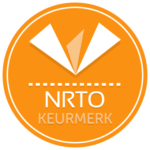- Train bij ons in Drachten of op jouw eigen locatie.
- Klanten geven ons een 9.2
- Erkende trainers.
- Ontvang een certificaat na deelname!
Kom je er niet uit?
Laat ons je helpen!
De AZ-800 training is ideaal voor IT-professionals die hybride netwerkinfrastructuren willen beheren met Microsoft Azure. Tijdens de cursus leer je essentiële vaardigheden in Windows Server beheer, virtualisatie, identiteitsbeheer en netwerkbeveiliging. Met de AZ-800 certificering ben je klaar om hybride omgevingen effectief te beheren, zowel on-premises als in de cloud. Perfect voor systeembeheerders en IT-managers die hun expertise willen uitbreiden.
"*" geeft vereiste velden aan
Kom je er niet uit?
Laat ons je helpen!

"*" geeft vereiste velden aan
Kom je er niet uit?
Laat ons je helpen!

"*" geeft vereiste velden aan
Kom je er niet uit?
Laat ons je helpen!

€1995,- Excl. BTW
Inschrijven voor een trainingDuik in de dynamische wereld van hybride serverbeheer met de uitgebreide training Administering Windows Server Hybrid Core Infrastructure (AZ-800). Deze Microsoft server training is zorgvuldig samengesteld voor ICT-professionals die hun kennis en vaardigheden willen uitbreiden in het beheren van Windows Server in een hybride omgeving, een cruciale vaardigheid binnen het hedendaagse ICT-landschap.
De training Administering Windows Server Hybrid Core Infrastructure (AZ-800) biedt een diepgaande verkenning van Windows Server-beheer binnen hybride omgevingen. Door deze training te volgen zul je de fijne kneepjes leren van het integreren van een lokale Windows Server met clouddiensten zoals Microsoft Azure. Deze integratie is essentieel voor bedrijven die een brug willen slaan tussen hun bestaande infrastructuur en de cloud.
Je krijgt een inzicht in het opzetten en beheren van hybride netwerken, het optimaliseren van oplossingen voor opslag en het verzekeren van naadloze identiteitsdiensten tussen lokale servers en cloudomgevingen. In deze AZ-800 training wordt speciale aandacht besteed aan het waarborgen van de beveiliging en naleving binnen deze hybride infrastructuur, waarbij zowel jouw theoretische kennis als praktische vaardigheden worden ontwikkeld.
Naast technische vaardigheden, richt de training Administering Windows Server Hybrid Core Infrastructure (AZ-800) zich ook op de beste werkwijzen voor het beheren van Windows Server-omgevingen en het toepassen van deze werkwijzen in het bedrijfsleven. Dit stelt jou in staat om niet alleen te begrijpen hoe jij Windows Servers kunt beheren, maar ook om strategisch na te denken over hoe deze technologieën het beste kunnen worden ingezet om organisatorische doelstellingen te ondersteunen.
De training Administering Windows Server Hybrid Core Infrastructure (AZ-800) is bijzonder waardevol voor ICT-professionals die hun kennis en vaardigheden willen verdiepen in het beheren van Windows Server en die willen leren hoe ze de voordelen van cloudtechnologieën kunnen integreren en benutten in hun dagelijkse werkzaamheden.
Deze AZ-800 training is met name geschikt voor de volgende mensen:
De training Administering Windows Server Hybrid Core Infrastructure (AZ-800) is een uitgebreid programma ontworpen om ICT-professionals te voorzien van de benodigde kennis en vaardigheden voor het effectief beheren van Windows Server in een hybride omgeving.
Door deel te nemen aan deze AZ-800 training zul je de volgende kennis en vaardigheden verkrijgen:
Voordat jij deelneemt aan deze AZ-800 training raden wij aan dat jij over de volgende kennis en vaardigheden beschikt:
AZ-800 | Module 1: Identiteitsservices in Windows Server
Deze module biedt een inleiding op identiteitsservices en beschrijft Active Directory Domain Services (AD DS) in een Windows Server-omgeving. De module legt uit hoe je domeincontrollers kunt implementeren in AD DS, evenals Azure Active Directory (AD) en de voordelen van het integreren van Azure AD met AD DS. Daarnaast behandelt de module de basisprincipes van Groepsbeleid en hoe je Groepsbeleidsobjecten (GPO's) configureert in een domeinomgeving.
Onderwerpen:
Lab: Implementatie van identiteitsservices en Groepsbeleid
Na het voltooien van deze AZ-800 module kunnen deelnemers:
AZ-800 | Module 2: Implementatie van identiteit in hybride scenario's
Deze module bespreekt hoe je een Azure-omgeving configureert zodat Windows IaaS-werkbelastingen die Active Directory vereisen, worden ondersteund. De module behandelt ook de integratie van een on-premises Active Directory Domain Services (AD DS)-omgeving in Azure. Tot slot wordt uitgelegd hoe je een bestaande Active Directory-omgeving uitbreidt naar Azure door IaaS-VM's die zijn geconfigureerd als domeincontrollers te plaatsen op een speciaal geconfigureerde Azure-virtuele netwerk-subnet.
Onderwerpen:
Lab: Implementatie van integratie tussen AD DS en Azure AD
Na het voltooien van deze AZ-800 module kunnen deelnemers:
AZ-800 | Module 3: Windows Server-beheer
Deze module beschrijft hoe je het principe van "least privilege" kunt implementeren via Privileged Access Workstation (PAW) en Just Enough Administration (JEA). De module belicht ook enkele veelgebruikte Windows Server-beheerhulpmiddelen, zoals Windows Admin Center, Server Manager en PowerShell. Daarnaast wordt het proces van post-installatieconfiguratie en de beschikbare tools voor dit proces, zoals sconfig en Desired State Configuration (DSC), beschreven.
Onderwerpen:
Lab: Beheer van Windows Server
Na het voltooien van deze AZ-800 module kunnen deelnemers:
AZ-800 | Module 4: Hybride beheer faciliteren
Deze module behandelt tools die het beheer van Windows IaaS VM's op afstand vergemakkelijken. De module behandelt ook hoe je Azure Arc gebruikt met on-premises serverinstellingen, hoe je Azure-beleid implementeert met Azure Arc en hoe je Role-Based Access Control (RBAC) gebruikt om toegang tot Log Analytics-gegevens te beperken.
Onderwerpen:
Lab: Windows Admin Center gebruiken in hybride scenario's
Na het voltooien van deze AZ-800 module kunnen deelnemers:
AZ-800 | Module 5: Hyper-V-virtualisatie in Windows Server
Deze module beschrijft hoe je Hyper-V VM's en containers implementeert en configureert. De module behandelt de belangrijkste functies van Hyper-V in Windows Server, beschrijft VM-instellingen en hoe je VM's configureert in Hyper-V. Daarnaast worden beveiligingstechnologieën besproken die worden gebruikt bij virtualisatie, zoals Shielded VM's, Host Guardian Service, beheerder-vertrouwde en TPM-vertrouwde attestation en Key Protection Service (KPS). Tot slot behandelt deze module hoe je containers en container-werkbelastingen uitvoert en hoe je container-werkbelastingen op Windows Server orkestreert met Kubernetes.
Onderwerpen:
Lab: Implementatie en configuratie van virtualisatie in Windows Server
Na het voltooien van deze AZ-800 module kunnen deelnemers:
AZ-800 | Module 6: Implementatie en configuratie van Azure VM's
Deze module beschrijft Azure compute- en opslagopties in relatie tot Azure VM's, en hoe je Azure VM's kunt implementeren met behulp van het Azure Portal, Azure CLI of sjablonen. De module legt ook uit hoe je nieuwe VM's kunt maken vanuit algemene afbeeldingen en Azure Image Builder-sjablonen kunt gebruiken om afbeeldingen te maken en beheren in Azure. Tot slot beschrijft deze module hoe je Desired State Configuration (DSC)-extensies implementeert, deze gebruikt om niet-conforme servers te corrigeren en aangepaste script-extensies inzet.
Onderwerpen:
Lab: Implementatie en configuratie van Windows Server op Azure VM's
Na het voltooien van deze AZ-800 module kunnen deelnemers:
AZ-800 | Module 7: Netwerkinfrastructuurservices in Windows Server
Deze module beschrijft hoe je kern-netwerkinfrastructuurservices in Windows Server implementeert, zoals DHCP en DNS. De module behandelt ook hoe je IP-adresbeheer implementeert en hoe je Remote Access Services kunt gebruiken.
Onderwerpen:
Lab: Implementatie en configuratie van netwerkinfrastructuurservices in Windows Server
Na het voltooien van deze AZ-800 module kunnen deelnemers:
AZ-800 | Module 8: Implementatie van hybride netwerkinfrastructuur
Deze module beschrijft hoe je een on-premises omgeving verbindt met Azure en hoe je DNS configureert voor Windows Server IaaS virtuele machines. De module behandelt hoe je de juiste DNS-oplossing kiest voor de behoeften van je organisatie en een DNS-server draait in een Windows Server Azure IaaS VM. Tot slot behandelt deze module hoe je Microsoft Azure virtuele netwerken en IP-adresconfiguratie beheert voor Windows Server Infrastructure as a Service (IaaS) virtuele machines.
Onderwerpen:
Lab: Implementatie van Windows Server IaaS VM-netwerken
Na het voltooien van deze AZ-800 module kunnen deelnemers:
AZ-800 | Module 9: Bestandsservers en opslagbeheer in Windows Server
Deze module behandelt de kernfunctionaliteit en use-cases van bestandsserver- en opslagbeheer-technologieën in Windows Server. De module bespreekt hoe je de Windows File Server-rol configureert en beheert, en hoe je Storage Spaces en Storage Spaces Direct kunt gebruiken. Deze module behandelt ook de replicatie van volumes tussen servers of clusters met behulp van Storage Replica.
Onderwerpen:
Lab: Implementatie van opslagoplossingen in Windows Server
Na het voltooien van deze AZ-800 module kunnen deelnemers:
AZ-800 | Module 10: Implementatie van een hybride bestandsserver-infrastructuur
Deze module biedt een overzicht van Azure File Services en hoe je connectiviteit met Azure Files configureert. De module behandelt ook hoe je Azure File Sync implementeert om Azure file shares te cachen op een on-premises Windows Server File Server. Daarnaast beschrijft deze module hoe je Cloud Tiering beheert en hoe je kunt migreren van DFSR naar Azure File Sync.
Onderwerpen:
Lab: Implementatie van Azure File Sync
Na het voltooien van deze module kunnen deelnemers:
Hieronder is een overzicht te vinden van trainingsmogelijkheden voor de Administering Windows Server Hybrid Core Infrastructure (AZ-800) training, met zowel klassikale als virtuele trainingen. Selecteer de best passende optie en start jouw reis naar succes.
De AZ-800 richt zich specifiek op het beheren van hybride omgevingen die zowel on-premises als cloudcomponenten bevatten. Andere Azure-certificeringen, zoals AZ-104 of AZ-500, zijn meer gericht op algemene cloudbeheerder- of beveiligingsrollen binnen Azure.
Tijdens de AZ-800 training leer je hoe je Windows Server-omgevingen beheert, identiteitsbeheer implementeert, netwerken beveiligt en hybride IT-infrastructuren integreert met Microsoft Azure.
Het examen test je kennis en vaardigheden op het gebied van hybride infrastructuurbeheer, beveiliging, en monitoring.
Hoewel de training technisch geavanceerd is, kunnen beginners met een basiskennis van Windows Server en netwerken ook deelnemen
De AZ-800 training richt zich op IT-professionals die verantwoordelijk zijn voor het beheren van hybride netwerkinfrastructuren. Het is bedoeld voor systeembeheerders, netwerkbeheerders en IT-managers die zowel on-premises als cloudomgevingen beheren.


